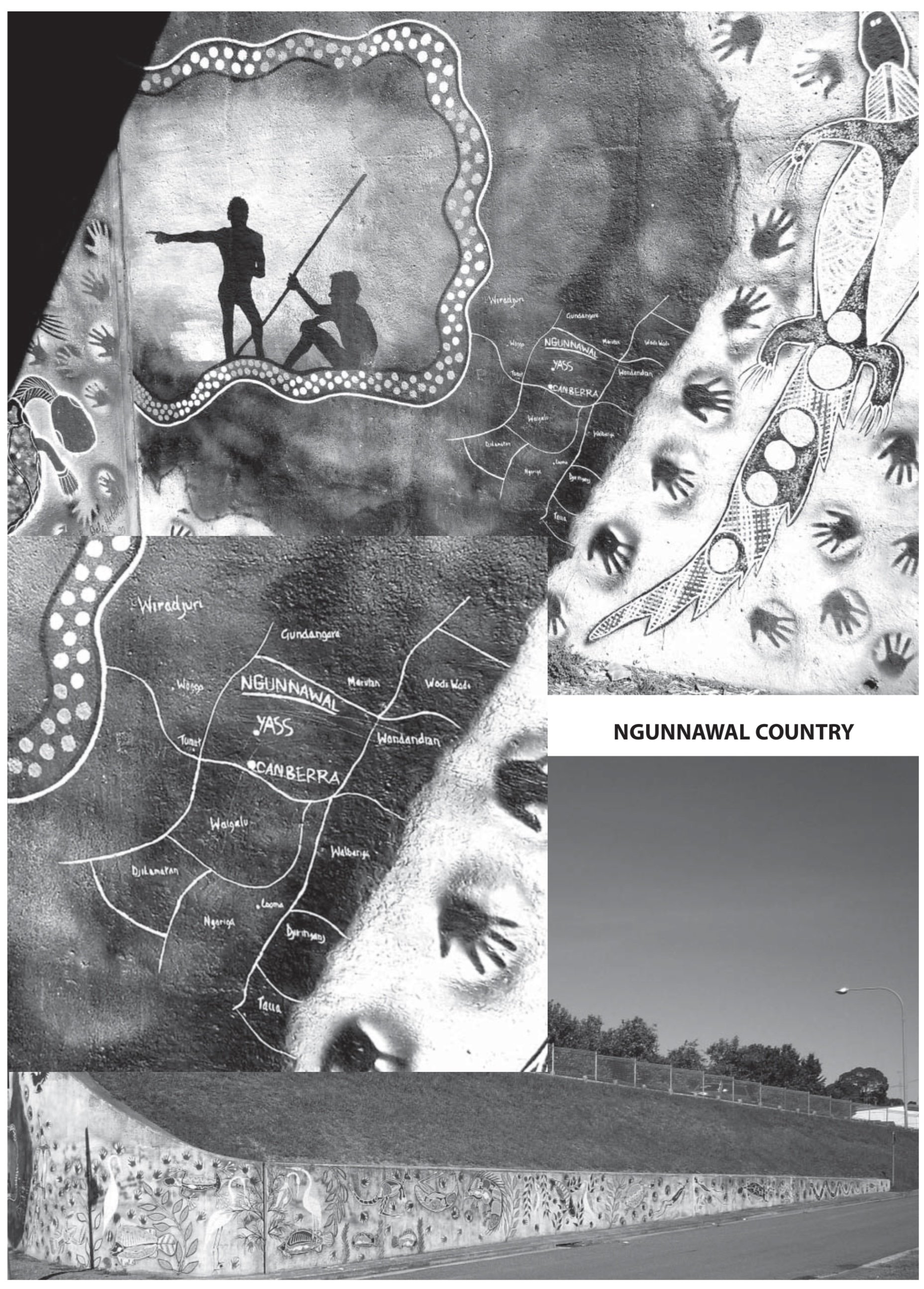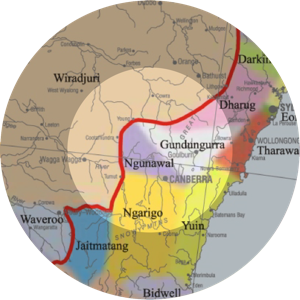
The Ngunnawal
The Ngunnawal people are the Traditional Custodians of the Canberra region with a continued cultural, spiritual and historical connection to the area.
Evidence of the Ngunnawal’s ancestral connection of the Canberra region stretches back over tens of thousands of years where cultural, social, environmental, spiritual and economic connection to these lands and waters has been maintained in a tangible and intangible manner.
Ngunnawal country was defined by the language of the people inhabiting the land, not by lines clearly marked on a map. Generally the borders covered the area from Yass to Boorowa, towards Coolac, the highlands west of the Shoalhaven and back to Goulburn. This is an area of almost 11 000 square kilometres.
Ngunnawal is bordered by Wiradjuri, Ngarigo, Gundungurra and Yuin lands.

-
We are many family groups that are Ngunnawal, not just an individual or one family. Therefore, our identity is a collective. Working together to spread awareness of our culture as well as encourage compassion and respect.
There is an obvious link between clan names and the modern names of the areas today. We have the
Maluunguula
Biyaligee
Namitch
Cumbeyan
Tuuguranuungh
Wuulubaluah.
We don’t normally identify each group, but it has become important for individuals to understand that like all Aboriginal groups, our identity is a collective identity – we are Ngunnawal.
To identify as Ngunnawal, individuals and their families must have a direct proven genealogical connection to an apical ancestor.
Bloodline - proven genealogical connection to an apical Ngunnawal ancestor.
identify as Ngunnawal.
Community accepts.
-
The word Canberra comes from the Ngunnawal language, meaning meeting place.
The Canberra region was a meeting place for when Ngunnawal invited their neighbours for ceremonial purposes.
There was reliable food and water supply. To access areas of significance such as Mt Majura and Mt Ainslie, Black Mountain and the major lore site at the current site of Parliament House, significant pathways were formed as people moved from place to place through transitional cultural boundaries following river and creek corridors and the ridges and spurs of hills and mountains. Pathways were the means of access across the region and, in the case of the main ranges visible from the highpoints of the Majura valley, a physical and visual link to major spiritual and gathering places.
-
Prior to colonisation, Ngunnawal people spoke several of the surrounding languages in addition to the Ngunnawal language. The Yuin, Ngarigo and Gundungurra are sister languages to Ngunnawal. Wiradjuri are our eighth to tenth cousin on the language tree.
During colonisation, government policies and practices banned and discouraged Indigenous Australians from speaking their languages. Consequently, many Indigenous Australian languages have been partially or completely lost.
Today, the rediscovery and reintegration of traditional languages is an important part of cultural renewal for many Indigenous people.
The Winanggaay Ngunnawal Language Aboriginal Corporation consists of dedicated community members passionate about bringing Ngunnawal language back into daily usage.
They meet weekly to learn as much language as they can, support other people in the Ngunnawal community learn language, and deal with language requests from the broader community.
